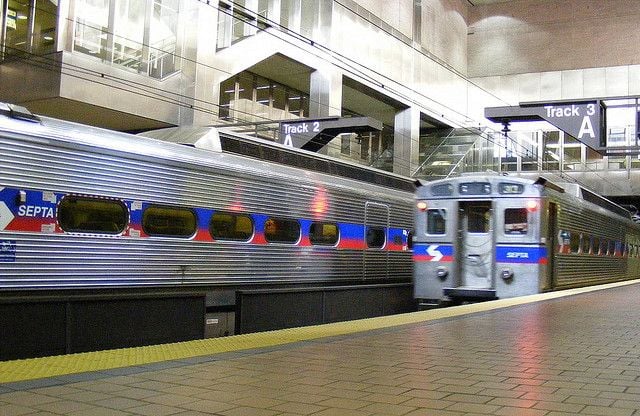In a radio interview last week, Pennsylvania Gov. Tom Corbett promised to unveil a comprehensive transportation funding plan for a state that has long struggled to deal with numerous underfunded mass transit agencies, as well as aging bridge and highway infrastructure. Pennsylvania has gone nearly 727 days without a delineated transportation funding plan, and even longer without a dedicated revenue source to cover constantly ballooning costs. Previous administrations issued debt or shifted state dollars to eke out operational budgets.
Corbett has been mum on details, only promising to deliver something by mid-January. Where the revenue will come from, as Corbett has adamantly stuck to a “no new taxes” platform, is unclear.
The issue has long polarized Pennsylvania legislators. In a state with two major urban centers and sprawling rural areas, different residents view transportation issues in starkly different ways. The comprehensive plan will implicitly have to address both highway and public transit funding, but whether it will favor one mode of transit over the other is still a matter of speculation.
The need for additional funding for both highways and public transit is great and growing. A 2010 report by the previous Rendell administration — which tried and failed to tie transit funding to proceeds from a botched plan to privatize the Pennsylvania Turnpike — estimated the commonwealth’s unfunded transportation liabilities at $3.5 billion, a figure projected to double within a decade. Another report, released last October from Auditor General Jack Wagner, estimated that Pennsylvania has nearly 6,000 structurally deficient bridges and 8,400 miles of below-standard roadway, making the Commonwealth the eighth worst state in terms of road maintenance.
The lack of a transit funding plan has troubled public transportation agencies in particular, as they are heavily dependent on state funding for much of their budgets.
“The absence of a multimodal transportation funding plan from Gov. Corbett has been problematic for transit agencies across the Commonwealth,” said Andy Sharpe, spokesperson for the Delaware Valley Association of Rail Passengers, an advocacy group that began an online petition encouraging Corbett to follow through on promises of dedicated funding for both mass transit and highways. “The Pittsburgh area transit agency, for example, has been hit especially hard, and may have to slash 35 percent of its service this year.”
However, mass transit advocates are particularly concerned given the political balance in the statehouse, which heavily favors auto-centric districts. State House Majority Leader Robert Turzai suggested this year that mass transit funding be eliminated from the state transportation budget altogether, and funded separately. The suggestion was shot down after backlash from groups like DVARP, but set the tone of the entire discussion.
“Nobody knows what Corbett is going to come up with, all we have right now are promises from the PennDOT secretary that mass transit will be funded,” Sharpe said. “But, as always, [the transportation plan] is probably going to be heavily slanted toward the road and bridge funding.”
Yet virtually every other transit agency in the state is dealing with a funding crises stemming from a deadly mixture of rising labor costs and the mixed blessing of booming ridership. Rising gas prices, environmental concerns, revitalizing urban centers and the recession have all pushed more riders onto public transit systems that have, essentially, frozen operating budgets.
The Port Authority of Allegheny County, which provides mass transit to Greater Pittsburgh and saw a 6.2 percent ridership increase last year, has already slashed $52 million from its operating budget while simultaneously raising overall revenue from 2007 to 2010. Nevertheless, the lack of a coherent transit budget under the Corbett administration has forced the agency to beg the state each year for emergency funding to close gaps in its $370 million budget.
Sharpe noted that the Philadelphia area’s transit agency, SEPTA, has been spared some of the pain thanks to a history of relative fiscal responsibility. However, he said that SEPTA, which saw a 4 percent ridership increase last year despite having also raised fares and threatened service cuts in the past, was heading back into dire territory because of the stagnation in funding.
“SEPTA hasn’t been hit as hard, although we’ve been feeling the effects,” said Sharpe. “Critical infrastructure renewal efforts, such as a substation that powers half of Regional Rail from Wayne Junction [station], and equally important station repairs, including the decrepit City Hall Station, have been put off. In some cases, they’ve been put off indefinitely.”
_200_200_80_c1.jpg)
Ryan Briggs is an investigative reporter based in Philadelphia. He has contributed to the Philadelphia Inquirer, WHYY, the Philadelphia City Paper, Philadelphia Magazine and Hidden City.
















